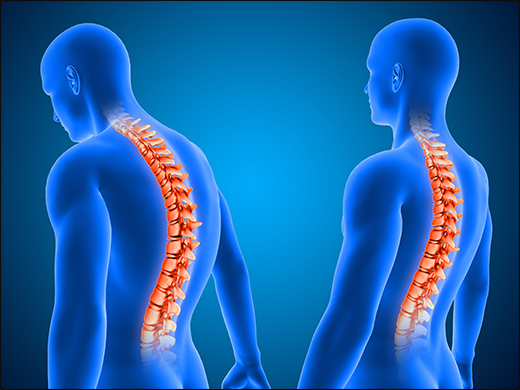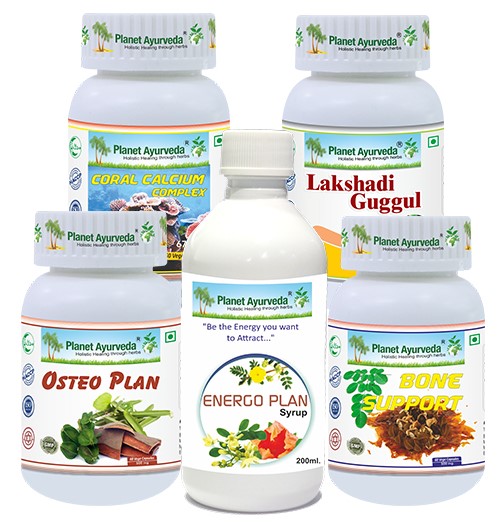Natural Ayurvedic Treatment for Osteopenia – Causes, Symptoms & Herbal Remedies
Abstract
Bones are often thought of as the silent scaffolding of our bodies—but what happens when that scaffolding begins to quietly weaken? Osteopenia is the whisper before the shout of osteoporosis, a condition where bone density dips below normal but hasn’t yet reached the danger zone. Often unnoticed and symptomless, osteopenia is like the early warning system nature built into our skeletons. It’s more common than you might think, especially in women after menopause, and it doesn’t just appear out of nowhere—it responds to years of lifestyle, nutrition, and hormonal shifts. Let’s discuss this condition in detail!

Introduction
Osteopenia is a condition where your bone mineral density (BMD) is lower than normal but not low enough to be considered osteoporosis. BMD is measured using a test called a DXA scan. According to the World Health Organization (WHO), osteopenia is when your BMD score is between -1 and -2.5. A score below -2.5 is considered osteoporosis. A decrease in BMD indicates changes in the structure of the bones, and both osteopenia and osteoporosis are related to the amount of minerals in the bones, not how the bones are made.
Causes
Osteopenia can develop due to various reasons, including :
- Aging : Bone mass naturally decreases in older people, which can lead to lower bone density.
- Hormonal Imbalance : A drop in hormone, particularly estrogen in women after menopause and testosterone in men, can increase bone loss.
- Family History : If osteopenia or osteoporosis runs in the family, you may be more likely to develop it.
- Poor Nutrition: Not getting enough calcium and vitamin D from your diet can weaken bones and lower their density.
- Lack of Exercise: Insufficient physical activity, especially weight-bearing exercises like walking or lifting weights, can cause bones to lose strength.
- Smoking: Smoking affects the body’s ability to absorb calcium, which can lead to weaker bones.
- Heavy Alcohol Use: Drinking large amounts of alcohol over time can negatively affect bone health and lower bone density.
- Medications: Some medications, especially corticosteroids taken for long periods, can increase the risk of bone loss.
- Health Conditions: Certain diseases such as hyperthyroidism, rheumatoid arthritis, or eating disorders like anorexia can increase the chances of developing osteopenia.
- Low Weight: People with a low body weight or low body fat are at a higher risk of having osteopenia because they may have less bone mass to begin with.
Risk Factors
Anyone can Develop osteopenia, but certain groups are at a higher risk, including:
- Adults over the age of 50
- Women
- Women after menopause
- Smokers
- Individuals who regularly consume alcohol.
Severe health conditions can also contribute to lower bone density or make osteopenia worse, such as :
- Hyperthyroidism
- Diabetes
- Chronic kidney disease
- Poor nutrition
- Deficiencies in calcium or vitamin D
- Hormonal imbalance, like Cushing syndrome
- Anorexia and other eating disorder
- Autoimmune disease affecting bones, like rheumatoid arthritis or collagen disorder
Certain medication can also increase the risk of developing osteopenia, including:
- Diuretics
- Corticosteroids
- Seizure medication
- Hormonal treatment for cancer
- Blood thinners
- Proton pump inhibitors (PPIs)
Symptoms
Osteopenia usually doesn’t show any clear symptoms, which is why it is often called a ‘silent’ condition. However if the bone density continues to decrease and progresses to osteoporosis, some signs may develop. These can include:
- Fracture : An increased risk of breaking bones from minor accidents or falls, particularly in areas like the wrist, hip, or spine.
- Back pain : Ongoing pain in the back, which might be caused by a broken or collapsed vertebra in the spine.
- Curved posture : A noticeable change in posture, like a rounded back, which can occur due to weakened bone in the spine.
- Height loss : A gradual reduction in height over time, often due to fracture in the spine.
- Brittle bones : More frequent bone break with minimal impact or trauma.
Diagnosis
Osteopenia is usually diagnosed with a bone density test called dual-energy x-ray absorptiometry (DXA). This test measures the amount of minerals in your bones and helps assess their strength. Here’s how it works:
- Bone Density Test: The most common way to diagnose osteopenia is through a DXA scan. This is a quick, painless procedure that typically measures bone density in the spine, hip, and sometimes the forearm.
-
T-Score: The results from the DXA test are shown as a T-score, which compares your bone density to the average young adult. The World Health Organization (WHO) defines the scores as:
- Normal bone density : T-score of -1.0 or higher
- Osteopenia : T-score between -1.0 and -2.5
- Osteoporosis : T-score of -2.5 or lower
- Health History and Risk Factors: Doctors will also consider factors such as your medical history, lifestyle choices (like diet, exercise, smoking, or alcohol consumption), and any medical conditions that may increase your risk of osteopenia.
- Other Tests: Sometimes, blood tests may be done to check for deficiencies in calcium or vitamin D or to rule out other conditions that could affect bone health.
Treatment
Treatment for osteopenia aims to slow down bone loss and prevent the condition from progressing to osteoporosis. While the specific approach may vary, here are the key treatment options:
Lifestyle Changes
- Healthy Diet: A diet rich in calcium and vitamin D is crucial for maintaining bone health. Calcium supports bone strength, and vitamin D helps the body absorb calcium. Foods like dairy products, leafy vegetables, and fortified foods are good sources.
- Physical Activity: Weight-bearing exercises (like walking, jogging, and dancing) and strength-training exercises (like lifting weights) can help strengthen bones and improve bone density.
- Stop Smoking: Smoking reduces the body’s ability to absorb calcium, which can lead to weaker bones.
- Limit Alcohol: Reducing alcohol intake can help protect bones, as excessive alcohol can interfere with bone health.
Medications
- Bisphosphonates
- Selective Estrogen Receptor Modulators (SERMs)
- Hormone Replacement Therapy (HRT)
Supplements
- If you’re not getting enough calcium or vitamin D from your diet, supplements may be recommended. It’s important to take them as directed by a healthcare provider to avoid taking too much.
Regular Monitoring
- Regular bone density tests (DXA scans) are essential to monitor bone health and assess whether treatment is working. Based on the results, your doctor may adjust your treatment plan.
Ayurvedic Overview
According to Ayurveda, Osteopenia is correlated with “Asthi dhatu Kshaya”. The clinical picture of Osteopenia/ Osteoporosis is similar to Asthi dhatu Kshaya. It is distinguished by Gradual Loss of ‘Saarata’ (Quality) of Asthi Dhatu (Bone tissue). This is due to vitiation of Vata that occurs in Asthi (Bone). Asthi Dhatu (Bone Tissue) has Guru, Kathina, sthira, etc. qualities. Due to vitiation of vata Asthi Shaushyam occurs, which results in the inability of asthi dhatu to perform its natural function of deha dharana.
Osteopenia can also occur due to depletion of Agni (Digestive fire) that leads to indigestion and that undigested food results in Ama ( toxins). It causes blockage of channels that carry the nutrition. Because of inadequate nutritive essence (Ahara Rasa) going to the tissue it causes irregular arrangement of tissues in the bone that leads to Asthi dhatu Kshaya.
Treatment
Line of treatment for osteopenia according to ayurveda is as follow :
Panchkarma
- Ksheer Basti (Enemas with milk)
- Sneha Basti (Enemas with Ghee)
Medications
- Asthishrunkala Ghrita
- Arjuna Twak Churna
- Lakshadi guggul
- Maharasnadi kashayam
- Dhanwantharam Kashayam
- Balarishtam
- Yogaraja Guggulu
- Mukta bhasam
- Akik pishti
- Ksheerabala thailam
Herbal Remedies for Osteopenia By Planet Ayurveda
Planet Ayurveda is a GMP certified ayurvedic company. They provide a wide range of natural, herbal formulations to support health and manage chronic disease. Planet Ayurveda’s Formulations are 100% pure, natural, chemical free and safe to use. All their formulations are prepared under the supervision of MD (Ayurveda) scholars. Their products focus on holistic care, addressing the root cause of ailments through personalised treatment, and lifestyle modification:-
1. Coral Calcium Complex
This capsule is a pure extract of Praval Pishti (Coral), Akik Pishti (Agate), Mukta Pishti (Pearl), Guduchi (Giloy Satva) etc. Coral Calcium Complex can help provide additional calcium, which is crucial for maintaining bone strength.
Dosage : 1 Capsule two times a day, with warm water after a meal
2. Lakshadi Guggul
This Tablet is a standardised pure extract of Laksha (Laccifer Lacca), Asthisamharaka (Cissus Quadrangularis), Arjuna (Terminalia Arjuna), Ashwagandha (Withania Somnifera), Nagbala (Grewia Populifolia) etc. All these herbs used in this formulation helps to strengthen bones, enhance calcium absorption. These herbs help to support overall joint health.
Dosage : 2 tablets two times a day with lukewarm water after a meal
3. Osteo Plan Capsules
This Capsule is a standardised pure extract of Ashwagandha (Withania Somnifera), Shatavari (Asparagus Racemosus), Hadjod (Cissus Quadrangularis), Arjuna (Terminalia Arjuna). These capsules help revitalize osteocytes and offer adequate lubrication to the joints. This supplement meets the necessary calcium requirements to maintain strong and healthy bones. It aids in alleviating joint pain, back pain, neck pain, ankle discomfort, and joint swelling.
Dosage : 2 capsule two times a day with warm water after a meal
4. Energo Plan Syrup
This herbal syrup is a blend of Jeevanti (Leptadenia Reticulata), Amalaki (Emblica Officinalis), Shatavari (Asparagus Racemosus), Ashwagandha (Withania Somnifera), Gokshura (Tribulus Terrestris), Pippali (Piper Longum), Shigru (Moringa Oleifera) etc. this syrup helps to promote bone health, increase calcium absorption, and support joint mobility.
Dosage : 2 tsp two times a day
5. Bone Support Capsules
This capsule is standardised pure extract of Shudh Laksha (Laccifer Lacca), Shuanjana beej (Moringa Oleifera), Hadjod (Cissus Quadrangularis), Arjun (Terminalia Arjuna), Praval Pishti (Corallium Rubrum) etc. these herbs enhance the absorption of calcium, promote flexibility in the joints, and contribute to overall bone health. It helps in maintaining bone density, reduces the risk of fracture, and improves joint mobility.
Dosage : 1 capsule two times a day with warm water after a meal
Conclusion
Osteoporosis is a prevalent metabolic bone disorder, characterized by a decrease in bone mass and an increased risk of fractures, which can also affect children. It requires effective treatment strategies that do not cause harmful side effects. Several single herbs mentioned in Ayurveda have shown promising results in improving osteoporotic conditions. According to Ayurvedic principles, these herbs enhance Dhatu Gata Agni (metabolism), promote Sroto Sodhana (cleansing of nutritive channels), and indirectly strengthen tissues by improving the transformation from Rasa Dhatu (plasma) to Meda Dhatu (fat). They also directly nourish and fortify the Asthi Dhatu (bone tissue) through their nutritional content, which includes components like calcium, phosphorus, and magnesium found in the Prithavi Mahabhoot (earth element). This approach helps prevent further loss of Asthi Dhatu (bone tissue) and strengthens bones. These herbal treatments are readily accessible, easy to use, and do not cause adverse reactions.




